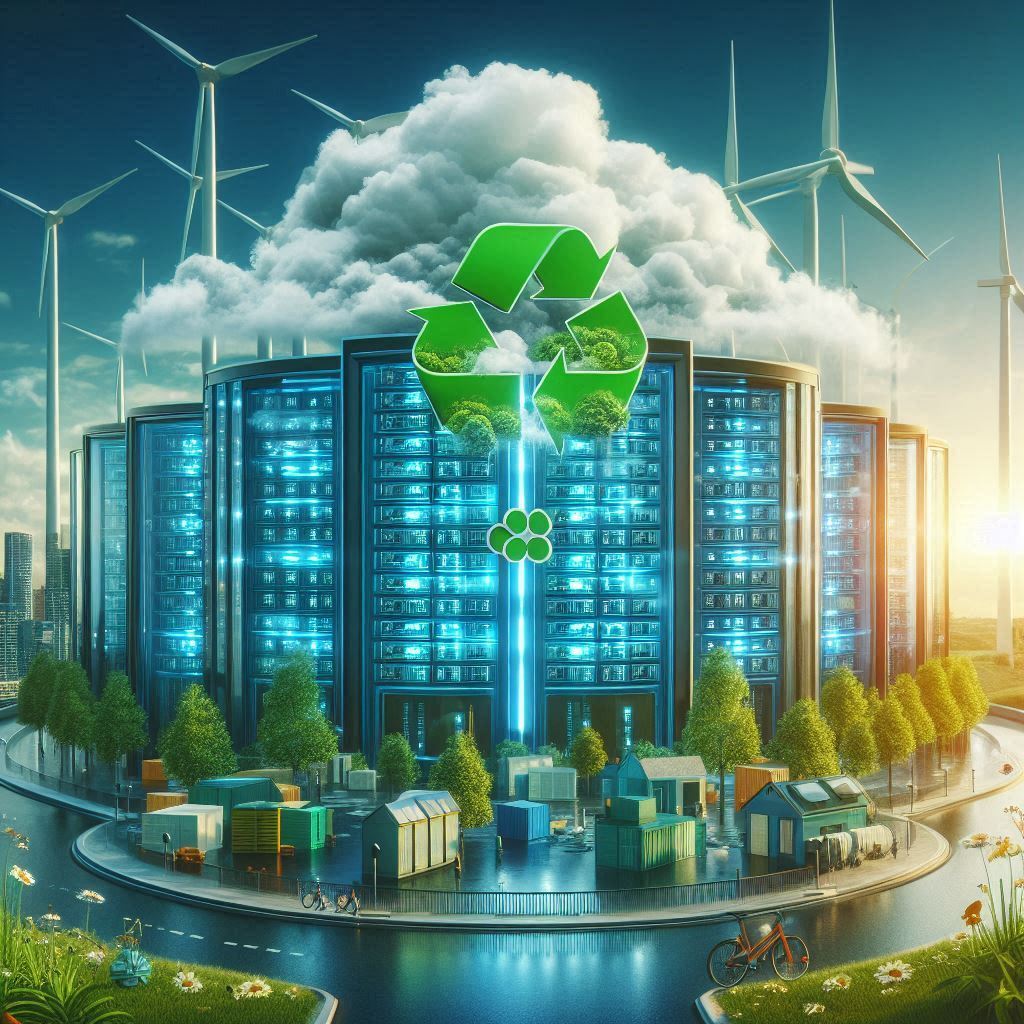Green Cloud, Clean Future: Transforming Data Centers for Sustainability
Introduction
The digital age is powered by data centers, the backbone of cloud computing, artificial intelligence, and global communications. However, traditional data centers consume massive amounts of energy and water, contributing significantly to carbon emissions. As the demand for data storage and processing grows, industries must adopt sustainable solutions to reduce their environmental impact. The rise of green data centers is paving the way for an energy-efficient, carbon-neutral future in cloud computing.
The Environmental Impact of Traditional Data Centers
Data centers are among the largest energy consumers, and their rapid expansion poses major environmental challenges:
- High energy consumption – Data centers account for 1-2% of global electricity use.
- Significant carbon emissions – Many still rely on fossil-fuel-based power sources.
- Water-intensive cooling systems – Conventional cooling methods use billions of gallons of water annually.
- Electronic waste and resource depletion – Outdated hardware contributes to environmental pollution.
To address these challenges, companies are shifting towards green data centers that leverage renewable energy, efficient cooling, and advanced sustainability strategies.
Key Innovations Driving Green Data Centers
The transformation of data centers into eco-friendly powerhouses relies on several key innovations:
1. Renewable Energy Integration
- Leading companies like Google, Microsoft, and Amazon are powering their data centers with solar, wind, and hydroelectric energy.
- Green Power Purchase Agreements (PPAs) ensure 100% renewable energy sourcing.
- On-site renewable generation, such as solar panel farms and wind turbines, reduces dependence on the grid.
2. Energy-Efficient Infrastructure
- Liquid cooling and immersion cooling significantly reduce power consumption compared to traditional air-cooling methods.
- AI-powered energy management systems optimize power distribution and reduce waste.
- High-efficiency servers designed with low-power processors minimize overall energy usage.
3. Sustainable Cooling Solutions
- Free cooling (air-side and water-side economization) utilizes naturally cool air or water to maintain optimal temperatures.
- Waste heat recovery systems repurpose excess heat for use in nearby buildings or district heating networks.
- AI-driven temperature regulation dynamically adjusts cooling mechanisms based on real-time data.
4. Carbon Offsetting and Circular Economy Practices
- Companies are investing in carbon offset programs to neutralize residual emissions.
- Server recycling and repurposing initiatives reduce e-waste by refurbishing and reusing components.
- Modular data center designs allow for scalability with minimal environmental footprint.
Real-World Examples of Green Data Centers
Several tech giants are leading the shift towards sustainable data center operations:
- Microsoft’s underwater data center (Project Natick) – Uses the ocean for natural cooling and operates with zero emissions.
- Google’s AI-powered energy management – Machine learning optimizes energy use, cutting cooling costs by 40%.
- Facebook’s Arctic data center – Located in Sweden, this facility relies on natural cooling and 100% renewable energy.
The Future of Sustainable Data Centers
The next generation of green data centers will focus on:
- AI and machine learning for predictive energy optimization.
- Hydrogen fuel cells as an alternative clean energy source.
- Quantum computing to reduce power consumption for intensive computational tasks.
- Edge computing and decentralized data centers to reduce energy-intensive long-distance data transfers.
Conclusion
The future of cloud computing depends on sustainable innovation. Green data centers are not just an environmental necessity—they are a smart business strategy for reducing costs and enhancing energy efficiency. As industries and governments push for carbon neutrality, adopting green data center practices will be crucial in shaping a cleaner, more sustainable digital future.
The transition to a Green Cloud is already underway—how fast will the world embrace it?
